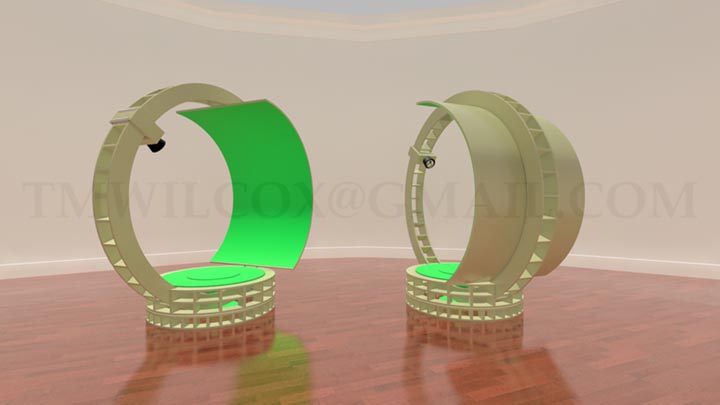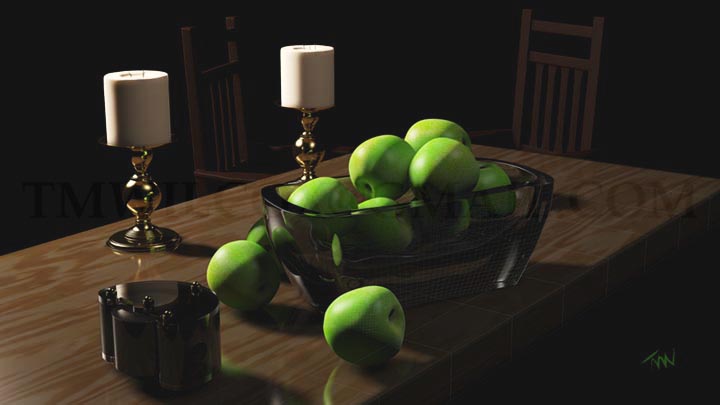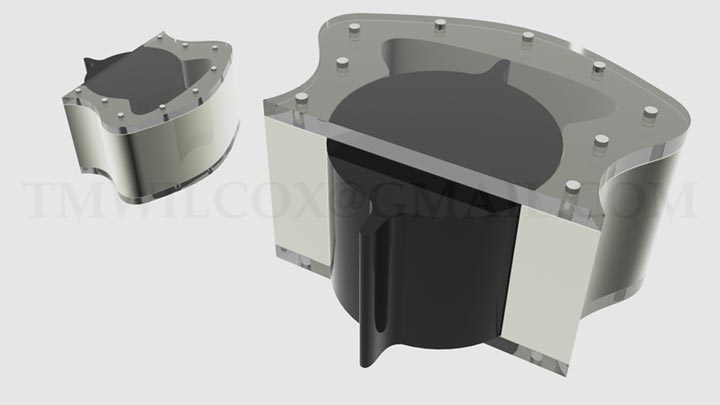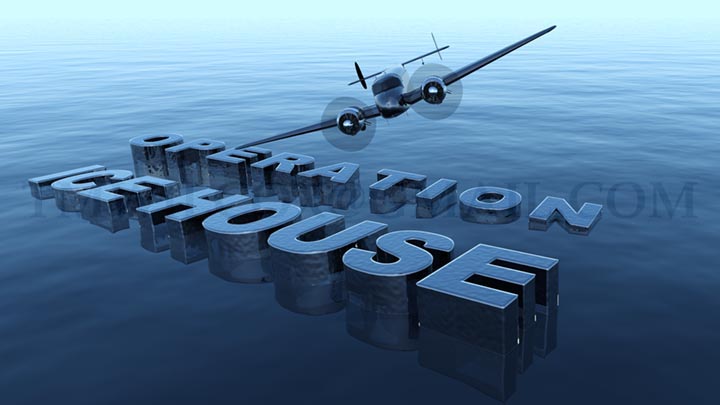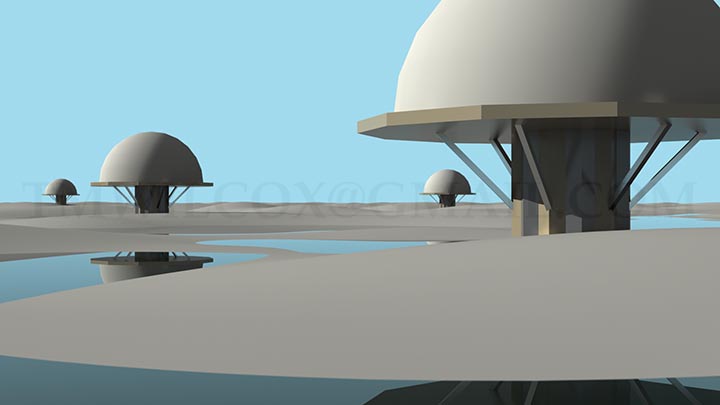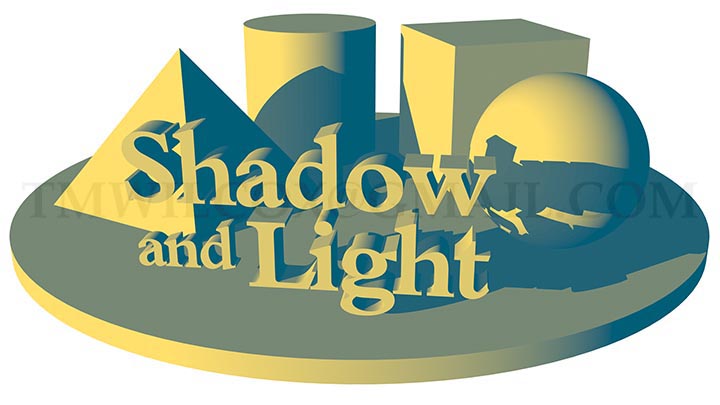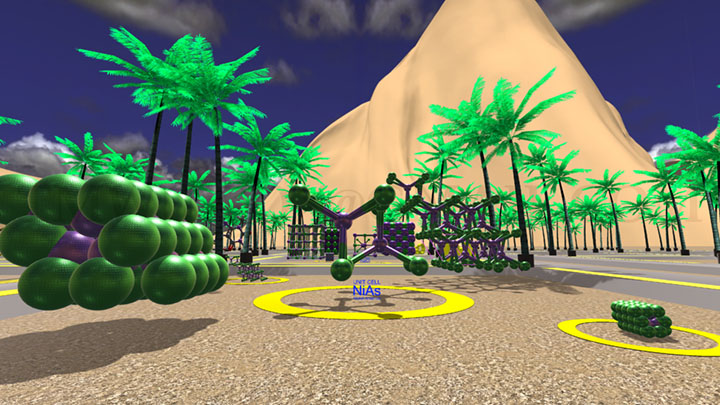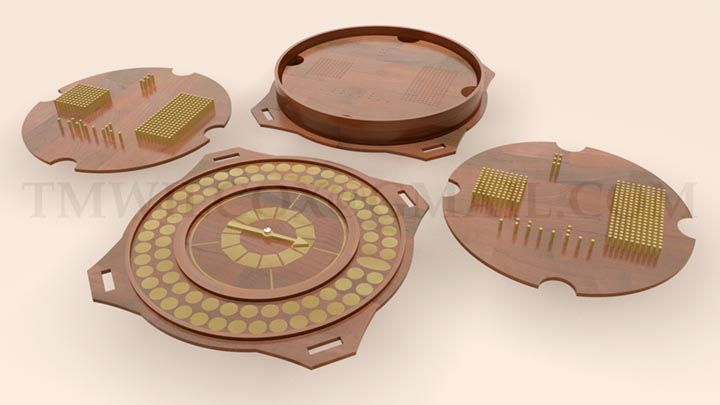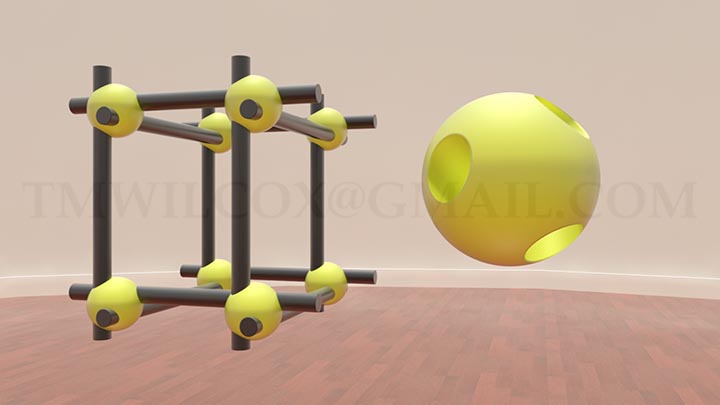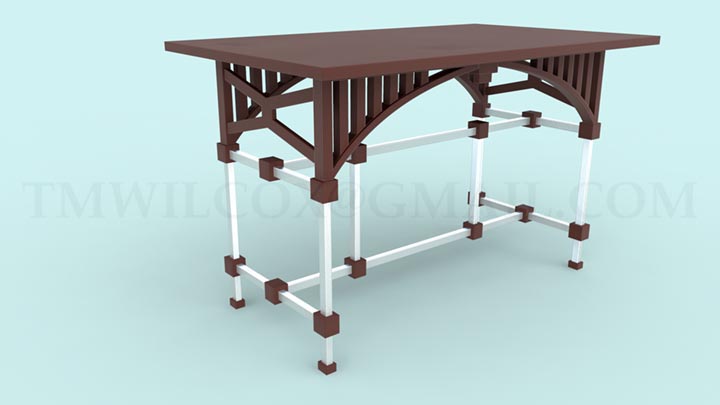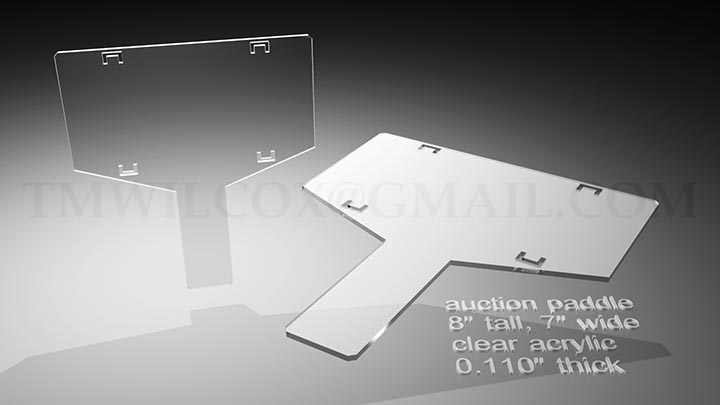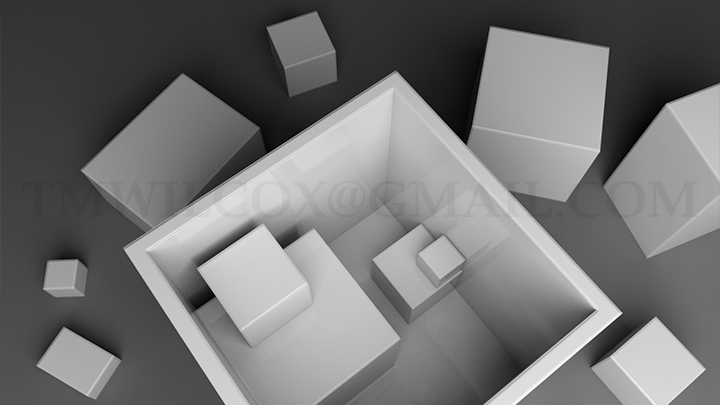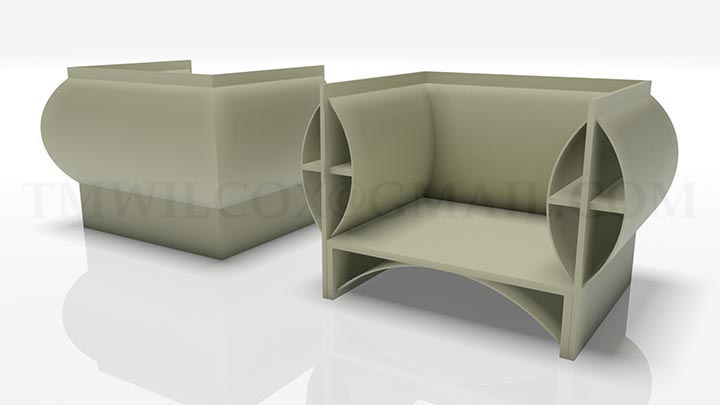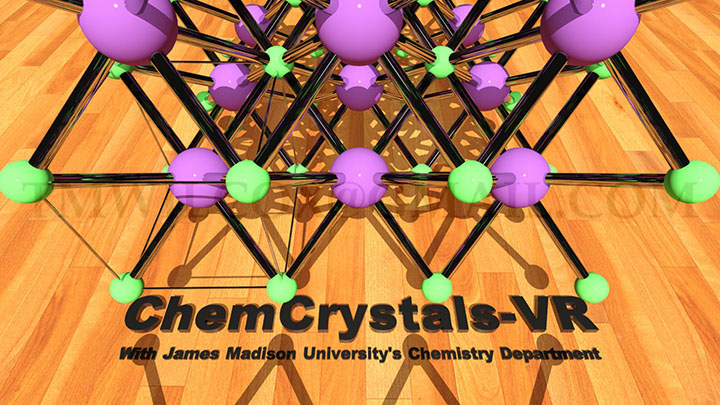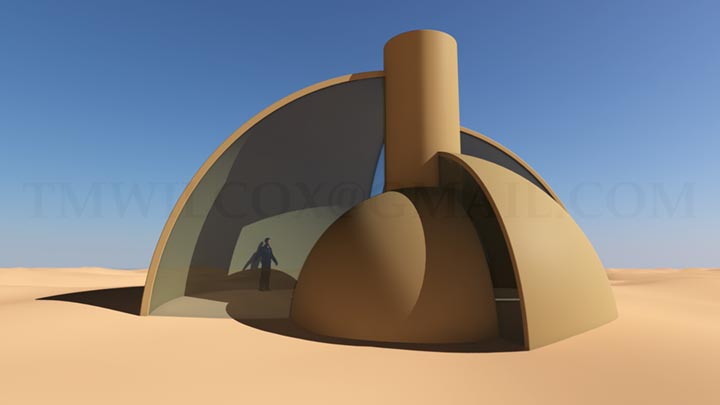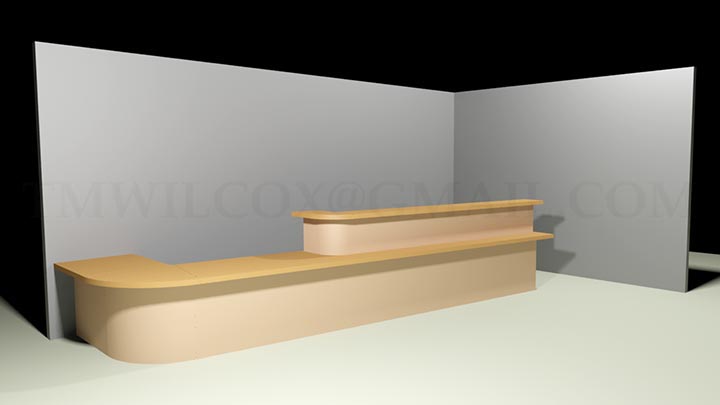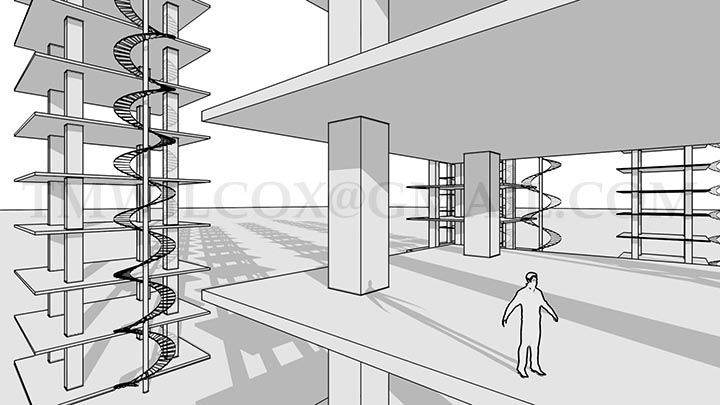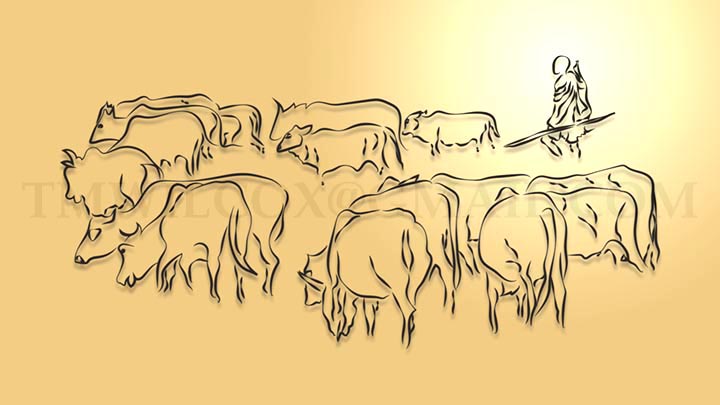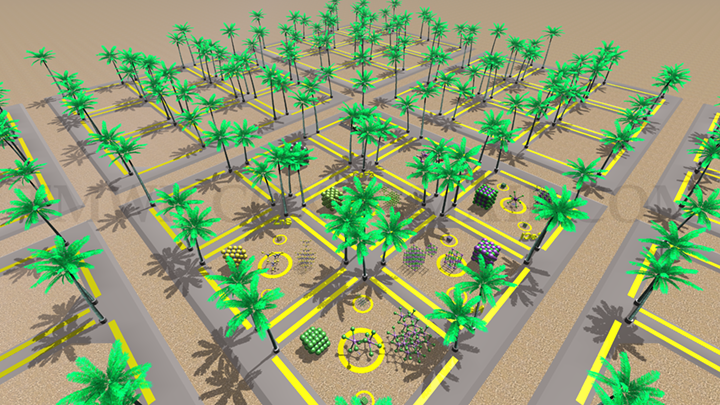
- Case Study -
THIS IS NOT A BRICK
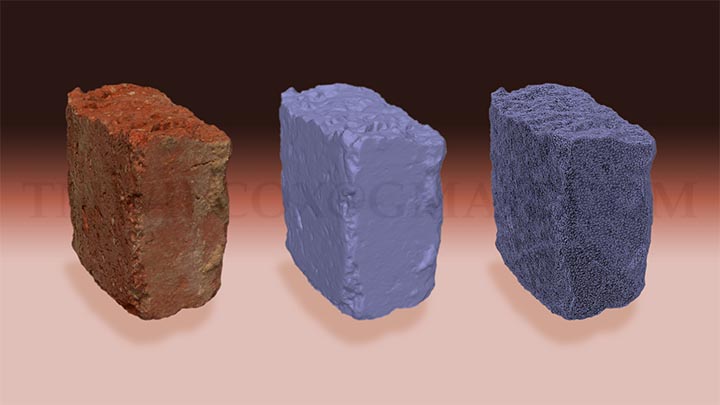
This is not a brick. It's a 3D scan of a brick, a polygon mesh derived from thirty-six sequential photographs (apologies to Rene Magritte). From the left are the texture mapped mesh object, the solid-rendered mesh, and the mesh itself. My scanning setup comprised a DSLR camera and tripod, a turntable, and a desk lamp. Experimenting with the process and toolchain called photogrammetry validated a key element of my 3D Scanner concept.
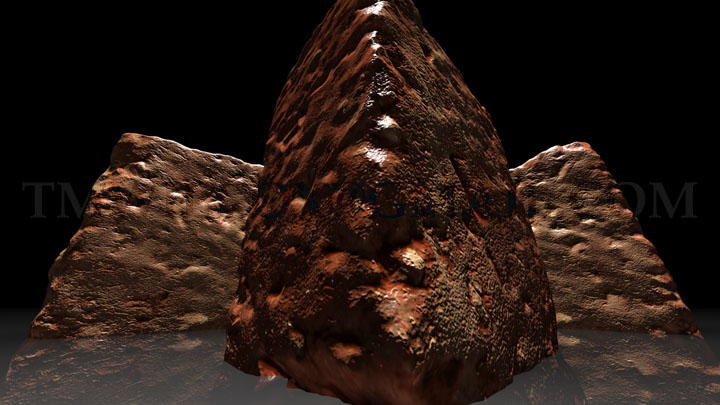
I needed a rough wall in a gamelike environment, so I retopologized the mesh and applied a displacement map that exaggerates surface detail. Photogrammetry is not yet a one step routine returning perfect mesh objects. Similar to the noise in a digital photograph, photogrammetry introduces noise that's three-dimensional. While software can reduce noise, 3D scans often need painstaking manual touch-up. Soon, machine learning will automate accurate smoothing and denoising.

This is not a brick. It's a 3D scan of a brick, a polygon mesh derived from thirty-six sequential photographs (apologies to Rene Magritte). From the left are the texture mapped mesh object, the solid-rendered mesh, and the mesh itself. My scanning setup comprised a DSLR camera and tripod, a turntable, and a desk lamp. Experimenting with the process and toolchain called photogrammetry validated a key element of my 3D Scanner concept.

I needed a rough wall in a gamelike environment, so I retopologized the mesh and applied a displacement map that exaggerates surface detail. Photogrammetry is not yet a one step routine returning perfect mesh objects. Similar to the noise in a digital photograph, photogrammetry introduces noise that's three-dimensional. While software can reduce noise, 3D scans often need painstaking manual touch-up. Soon, machine learning will automate accurate smoothing and denoising.

I needed a rough wall in a gamelike environment, so I retopologized the mesh and applied a displacement map that exaggerates surface detail. Photogrammetry is not yet a one step routine returning perfect mesh objects. Similar to the noise in a digital photograph, photogrammetry introduces noise that's three-dimensional. While software can reduce noise, 3D scans often need painstaking manual touch-up. Soon, machine learning will automate accurate smoothing and denoising.
